As part of the 25th anniversary of the National No-Tillage Conference, the staff of No-Till Farmer honored 25 active individuals who have made no-till work and grow over the years.
These “No-Till Legends” include outstanding growers, educators and suppliers who have played a key role in the growth of no-till from 3.2 million acres in 1972 to nearly 100 million acres this year.
The 25 “No-Till Legends” were honored during the recent 25th annual National No-Tillage Conference held earlier this winter in St. Louis. Hailing from 15 states, they are listed here in alphabetical order.
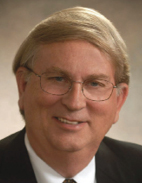
Roy Applequist
◆ Roy Applequist, Salina, Kan. Establishing Great Plains Mfg. Co. in 1976, Applequist was among a number of short line farm equipment manufacturers in the early 1980s that saw the need for designing equipment specifically for the no-till market. The company was an active participant in Tennessee’s Milan No-Till Field Days, where a few drill manufacturers introduced narrow row prototype drills that had been designed specifically for no-till conditions.
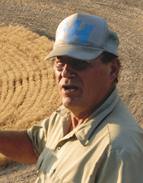
John Aeschliman
◆ John Aeschliman, Colfax, Wash. Among the no-till pioneers in the Palouse area of eastern Washington, Aeschliman successfully no-tills some of the steepest hills found anywhere in the country. He and his son run a 4,000-acre operation that’s been no-tilled since the mid-1970s. They no-till winter wheat, spring wheat and spring barley in 7½-inch paired rows and also no-till corn, peas, sunflowers, garbanzo beans and are experimenting with cover crops in a 100% continuous no-till system.
Among the founders of the Pacific Northwest Direct Seed Assn., Aeschliman sees no-till as a way to eliminate costly soil erosion.
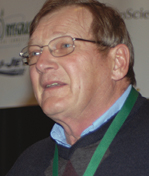
Dwayne Beck
◆ Dwayne Beck, Pierre, S.D. A South Dakota State University agronomist, Beck is also the director of the farmer-supported and financed Dakota Lakes Research Farm. Over the years, Beck has produced some of the most practical no-till research for farmers who deal with limited moisture. He has shown the importance of seeding a diversified assortment of crops and has been a strong advocate for cover crops in no-till programs. Beck is an unusual researcher that understands the need for providing no-tillers with practical and profitable ideas they can put to immediate use.
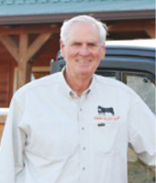
John Bradley
◆ John Bradley, Lutts, Tenn. A long-time University of Tennessee agronomist, Bradley served as director of the annual mid-summer Milan No-Till Field Day that attracted tens of thousands of growers to see the latest innovations in no-till research. One of the pioneers of no-till cotton, he has shown thousands of growers how to earn large payoffs with a wide variety of no-tilled crops.
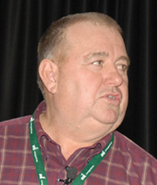
David Brandt
◆ David Brandt, Carroll, Ohio. Brandt began farming in 1971 and has seeded numerous cover-crop mixtures on his 1,150-acre corn, soybean and wheat operation since 1978. A huge booster of the tremendous value of cover crops in improving soil health, Brandt is a frequent speaker at no-till events where he always shares a wealth of practical and low-input cost ideas he’s used to increase no-till profitability.
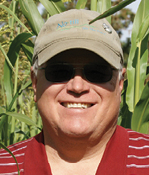
Gabe Brown
◆ Gabe Brown, Bismarck, N.D. The Brown family operates a highly diversified 5,000-acre operation that focuses on holistically integrating grazing and no-till systems. This includes cash crops, multispecies cover crops and the production of all-natural grass-fed beef, poultry and sheep. Relying extensively on the many benefits of no-tilling, Brown’s system has regenerated the natural resources on the ranch without extensive use of synthetic fertilizers, herbicides, insecticides or fungicides.
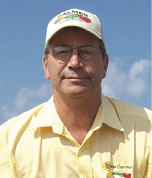
Marion Calmer
◆ Marion Calmer, Alpha, Ill. The owner of Calmer Ag Research Center and Calmer Corn Heads has conducted thousands of highly practical on-farm research projects. A firm believer in field-sized replicated research, his plots run the entire length of fields in widths that match his no-till planter, drill and combine. His mid-summer tours and winter meetings are jam-packed with practical research results that include plenty of down-home advice to help growers no-till more effectively while pushing up cropping profits. Much of his research has centered on ways to make the most effective use of fertilizers, lower seeding rates, planter attachments, combine adjustments and narrow-row corn.
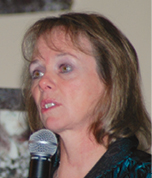
Jill Clapperton
◆ Jill Clapperton, Spokane, Wash. Benefitting fully from the amazing population of critters living beneath the soil surface, Clapperton says no-till is now at the point where it not only improves soil structure and stops erosion, but also will have a far-reaching impact on consumer preferences and human health. An internationally known soil health specialist and soil ecologist, she studies the relationships between organisms and their environments to more effectively manage and benefit from the long-term biological fertility of our soils.
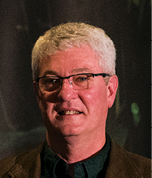
Barry Fisher
◆ Barry Fisher, Indianapolis. A regional soil health manager with the NRCS, Fisher has devoted much of his career to encouraging the use of no-till and cover crops. Over the years, he’s worked with thousands of farmers while conducting numerous field days and has worked with many no-till equipment options to demonstrate what makes the most sense when it comes to no-till.
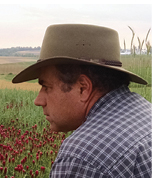
Steve Groff
◆ Steve Groff, Holtwood, Pa. A veteran no-tiller and cover crop enthusiast, Groff has helped thousands of growers improve the health of their soils with cover crops. Having successfully no-tilled tomatoes, sweet corn, pumpkins, corn, alfalfa, soybeans, wheat and numerous cover crops for 36 years, Groff is best known for the introduction of the tillage radish as a cover crop and its huge no-till benefits.
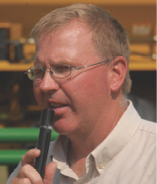
David Hula
◆ David Hula, Charles City, Va. A multigenerational no-tiller, Hula is best known for his record-breaking corn yields that include a 532-bushel-per-acre field that represents the highest yield ever reported in the National Corn Growers Assn. competition. Many of his cropping ideas have dramatically boosted yields for thousands of no-tillers across the country.
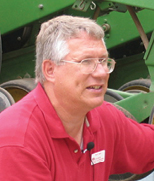
Paul Jasa
◆ Paul Jasa, Lincoln, Neb. An ag engineer at the University of Nebraska, Jasa’s first experience with no-till occurred when he observed the use of planters by 150 growers. After 35 years of continuous no-till research, Jasa has helped producers recognize the value of a total systems approach. This includes developing a long-term no-till plan to rebuild the soil structure, no-tilling every acre every year, adhering to a diverse no-till rotation, managing residue so it works for you, placing nutrients where the crop roots will find them and making necessary adjustments with no-till planters, drills or air seeders to make sure you are slicing through residue, getting uniform seed depth and obtaining effective seed-to-soil contact.
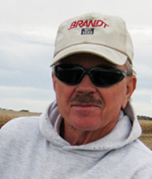
Jim Kinsella
◆ Jim Kinsella, Lexington, Ill. A long-time no-till and strip-till enthusiast, Kinsella determined these reduced tillage practices save time and money while having a positive impact on the environment. He and his son no-till soybeans and strip-till corn on 2,200 acres and have seen soil quality improve dramatically. In earlier days, Kinsella worked with BASF and other ag chemical companies to promote no-till and even built an on-farm meeting center to hold winter meetings and summer field days.
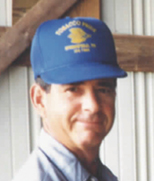
Howard Martin
◆ Howard Martin, Elkton, Ky. Martin started no-tilling to earn a decent living from poor-quality land. He later developed specialized no-till equipment and his success led to the formation of Martin Industries. Development of row cleaners, fertilizer openers, closing wheels, gauge wheels and other no-till row-unit attachments led from a humble one-person farm shop beginning to a company with more than 40 employees.
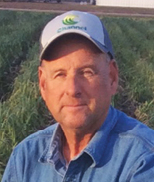
Jeff Martin
◆ Jeff Martin, Mount Pulaski, Ill. No-tilling since 1982, Martin has dramatically expanded the family operation and for 16 years has been strip-tilling continuous corn on much of the farm’s 5,000-plus acres. Based on extensive soil nitrogen (N) testing, the family has cut back sharply on N applications with corn while producing yields of over 250 bushels per acre. By paying attention to details, Martin maintains both systems have the potential for higher yields with either rotated or continuous corn and can be more profitable than with any other tillage system.
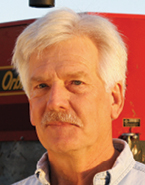
Ray McCormick
◆ Ray McCormick, Vincennes, Ind. A no-tiller for 30 years in a 3,200-acre operation, McCormick believes nothing pays bigger dividends than investing in conservation. When he talks diversification, it means no-tilling corn, wheat, both full-season and double-cropped soybeans and cover crops, along with managing 1,000 acres of woodlands and wetlands for hunters who pay to hunt waterfowl and whitetail deer on the farm, and raising peaches. Recognizing the nutrient and soil protection value, McCormick says he would not sell residue from his no-till fields even if someone offered $100 per acre.
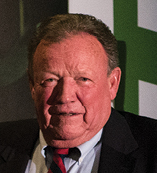
John McNabb
◆ John McNabb, Inkom, Idaho. Having no-tilled as many as 43,000 acres in a year, McNabb and his family are a shining example of how no-till can maximize farm profits. Following mainly a winter and spring wheat rotation, no-till has enabled McNabb to get along with half the number of tractors, one-fourth of the labor and enjoy dramatic drops in fuel and herbicide costs compared to conventional tillage. His bottom line indicates no-till returns an extra $35-$40 per acre.
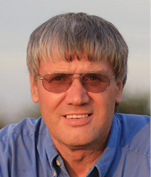
Phil Needham
◆ Phil Needham, Calhoun, Ky. Born and raised in the United Kingdom, Needham came to the states to show American wheat growers how to dramatically boost wheat yields by adopting the British system. Working on this project, he soon learned about no-till and its drawbacks due to a lack of equipment modifications. From that experience, he launched Needham Ag Technologies and has built a career around the need to adjust and modify planters, drills, combines and sprayers for peak performance under no-till’s heavy residue situations. Numerous equipment design modifications seen over the past several decades have resulted from Needham’s ideas.
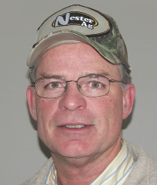
Joe Nester
◆ Joe Nester, Bryan, Ohio. Working as a crop consultant with no-tillers in northwestern Ohio, Nester has demonstrated how no-till can return an extra $40-$50 in profit per acre.
His work with no-till started in the late 1980s and over the next few years, Nester bought ten 750 drills and rented them to farmers. Within a few years, most of his crop consulting clients switched from 100% conventionally tilled soybeans to nearly 100% no-tilled soybeans. Nester has also worked on the algae concerns in Lake Erie due to the over-application of phosphorus and has been a trendsetter in helping no-tillers reduce costly soil and nutrient runoff while turning out high yields with less fertilizer.
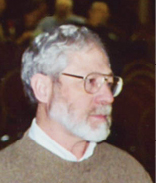
Mike Plumer
◆ Mike Plumer, Creal Springs, Ill. A big booster of both cover crops and no-till, Plumer served for a number of years as a University of Illinois extension educator. The use of both no-till and cover crops on his own farm showed him how they could dramatically improve both soil quality and income. After retiring as a university educator, he has continued to work with growers and suppliers on finding new cover crop solutions, making more effective use of no-till and improving soil health.
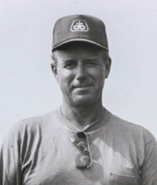
Ray Rawson
◆ Ray Rawson, Farwell, Mich. The “father of zone tillage,” Rawson and his sons run a large-acreage operation that features no-till corn and soybeans. He spent a number of years promoting the zone-till system at hundreds of meetings across the Corn Belt and working one-on-one with growers. A number of reduced tillage tools on the market today got their start in the Rawson family’s farm shop.
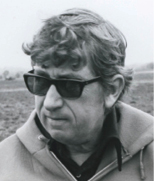
Bill Richards
◆ Bill Richards, Circleville, Ohio. Known as the grandfather of no-till and among the early adopters of the practice in southern Ohio, no-till enabled the Richards family to expand to more than 3,000 acres — a move that completely changed his life. Early on, he saw the value of utilizing wider equipment to run tires in permanent wheel tracks to reduce compaction and no-till 31 rows of 20-inch corn in the days when most growers thought narrower rows meant a 30-inch spacing.
Richard’s contributions to the no-till movement started on the home farm, but he later had a tremendous impact while serving as chief of the Soil Conservation Service. In this position, he convinced many government officials and farmers that no-till was here to stay and could make the environment better for everyone.
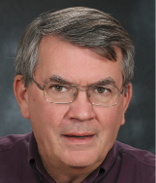
Guy Swanson
◆ Guy Swanson, Spokane, Wash. Working with his father, Swanson helped develop the Yielder no-till drill for Pacific Northwest conditions and engineered specialized openers, spraying equipment and fertilizer applicators in the family’s farm shop. This highly specialized and extremely heavy equipment was used to no-till a variety of grain, pulse and forage crops while dramatically reducing soil erosion on the steep hills of the Palouse. Swanson has continued to help no-tillers earn higher profits by developing the Exactrix Global Systems fertilizer application system that has allowed growers to trim nutrient rates.
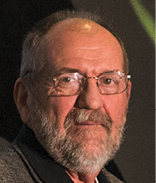
Dan Towery
◆ Dan Towery, Lafayette, Ind. Serving as an NRCS educator in Illinois, Towery saw the many benefits of no-till. Later as a staff member with the Conservation Technology Information Center, he promoted no-till and cover crops as a means of increasing farm profits while protecting the environment. Now working as a consultant to government agencies, organizations and suppliers, Dan has played a critical role in the expansion of cover crops across the nation, especially within the no-till ranks.
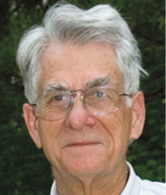
Glover Triplett
◆ Glover Triplett, Starkville, Miss. Triplett did some of the early research on no-till as an Ohio State University weed scientist in the early 1960s. He also started the longest on-going no-till research plots in the world at Ohio State’s Wooster facility. These extensive plots have produced valuable no-till data for more than 55 years with over 75 scientific papers being published by educators from the no-till research results.
The 2024 No-Till History Series is supported by Calmer Corn Heads. For more historical content, including video and multimedia, visit No-TillFarmer.com/HistorySeries.








Post a comment
Report Abusive Comment